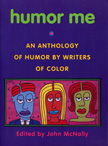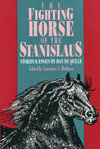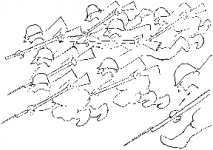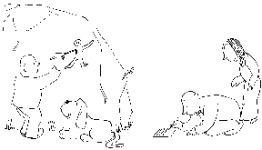The Last Flower
“A melancholy argument against annihilation, The Last Flower is on the short list of books worth clutching to your chest as the world is destroyed.”—David Rees, author, Get Your War On
“It’s important to remember while reading this book that it was created just as the Nazi jackboots were beginning to stomp over Europe. Thurber took that staccato rhythm and used it as the underlying beat of his antiwar fable and you can feel it every time you turn the page. Combine that with a handful of hen-scratched pen lines and a few well-chosen words and you have a graphic work that manages to convey vulnerability, despair, and renewed hope—all with the trademark Thurber charm. Sadly, it is a work that is as relevant today as it was when first published.”—Seth, author, Wimbledon Green
“James Thurber’s The Last Flower expresses a simple but deep truth: the unending cycle of birth, death, and rebirth. It is an uncynical tale but not a toothless one, and its idealism feels hard-won. The humor has the typical Thurber charm, and even a bit of absurdity, but it is never merely whimsical; rather, it is leavened with the sorrow and gravitas of an uncertain world that was teetering on a very real, perilous edge, and this gives both the spirited drawings and the heartfelt sentiment an undeniable power and nobility.”—Ivan Brunetti, editor, An Anthology of Graphic Fiction, Cartoons, and True Stories
“. . . a happy miracle.”—New York Herald Tribune
Praise for James Thurber
“It is a form of humor which is also a way of saying something serious. There is a criticism of life at the bottom of it. It is serious and even somber. Unlike so much humor, it is not merely a criticism of manners—that is, of the superficial aspects of society at a given
moment—but something more profound. His writings and also his illustrations are
capable of surviving the immediate environment and time out of which they spring. To some extent, they will be a document of the age they belong to.”—T. S. Eliot
“Although he is best known for ‘Walter Mitty’ and ‘The Male Animal,’ the book of his I like the best is ‘The Last Flower.’ . . . And of all the flowers, real and figurative, that will find their way to Thurber’s last resting place, the one that will remain fresh and wiltproof is the little flower he himself drew, on the last page of that lovely book.”—E. B. White
Originally published in November 1939, two months after World War II officially began, James Thurber’s parable in pictures—a graphic novel ahead of its day—about the eternal cycles of war, peace, love, and the resilience of one little flower remains as relevant today as it was then. The New York Times called it “at once one of the most serious and one of the most hilarious contributions on war.” E. B. White wrote, “In it you will find his faith in the renewal of life, his feeling for the beauty and fragility of life on earth.”
Civilization has collapsed after World War XII, dogs have deserted their masters, all the groves and gardens have been destroyed, and love has vanished from the earth. Then one day, “a young girl who had never seen a flower chanced to come upon the last one in the world.” Written amid the sorrow and chaos of war, dedicated to his only child “in the wistful hope that her world will be better than mine,” Thurber’s The Last Flower is a wise and loving testimony to the salvation found in nature. This new printing will feature new scans of Thurber’s original 1939 drawings.
The author of nearly forty books, including collections of essays, short stories, fables, plays, and children’s stories, James Thurber (1894–1961) created an acerbic world of beleaguered husbands, domineering women, and fabulous animals; no one before or since has drawn dogs as he did. A native of Columbus, Ohio, he worked as a newspaperman before joining the staff of the New Yorker. A self-proclaimed “painstaking writer who doodles for relaxation,” he began his career as a cartoonist when E. B. White, his New Yorker office mate, rescued his drawings from the trash.







